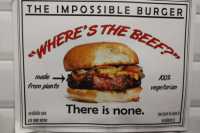I meant to address this last weekend but that was the day my wife just had to see what it was like to ride in an ambulance..
It's not a new concept at all, been known for many decades and a lot of
small producers here in this country do use it. We call it MIG tho. Mob Intensive Grazing. Another name is Management Intensive Grazing and the 'M' part of that last one is why it isn't more prevalent in the US.
Allan Savory is probably the world's most well known authority on the practice and he has preached it for many decades, but he's from Zimbabwe and things can be done a lot different there, and successfully, than here in North America.
Why? The 'M' word. Management. You can exchange that for Labor and Time, both of which a cattle producer has very little of. Instead of putting a herd out on 500 acres and letting them eat and grow and reproduce, you subdivide that 500 ac up into many small paddocks depending on how many head of livestock you intend to run. You have to watch them constantly, knowing when to open the gate into the next little paddock when the grass in the original paddock is eaten down to just above the crown.
This practice also means more infrastructure cost. Fencing is NOT cheap, and then there's the problem of water.
Cattle will need about 30 gal ea every day, so you have to ensure they have it. Wells, piping, float valves, all expensive to buy, install and maintain...in EACH small paddock. Cattle producer right now, is only getting about $1.50/lb live weight.
The other difference is our relatively short growing season here. Even here in East Texas, my grass stops growing in Sept and doesn't green up again until beginning mid March and even thru March and early April, there is very little nutritional value in the green forage as it is mostly just water.
It's a good concept, but it would be very difficult to pull it off here in this country for most producers to make a profit.
[This message has been edited by maryjane (edited 03-16-2020).]





















